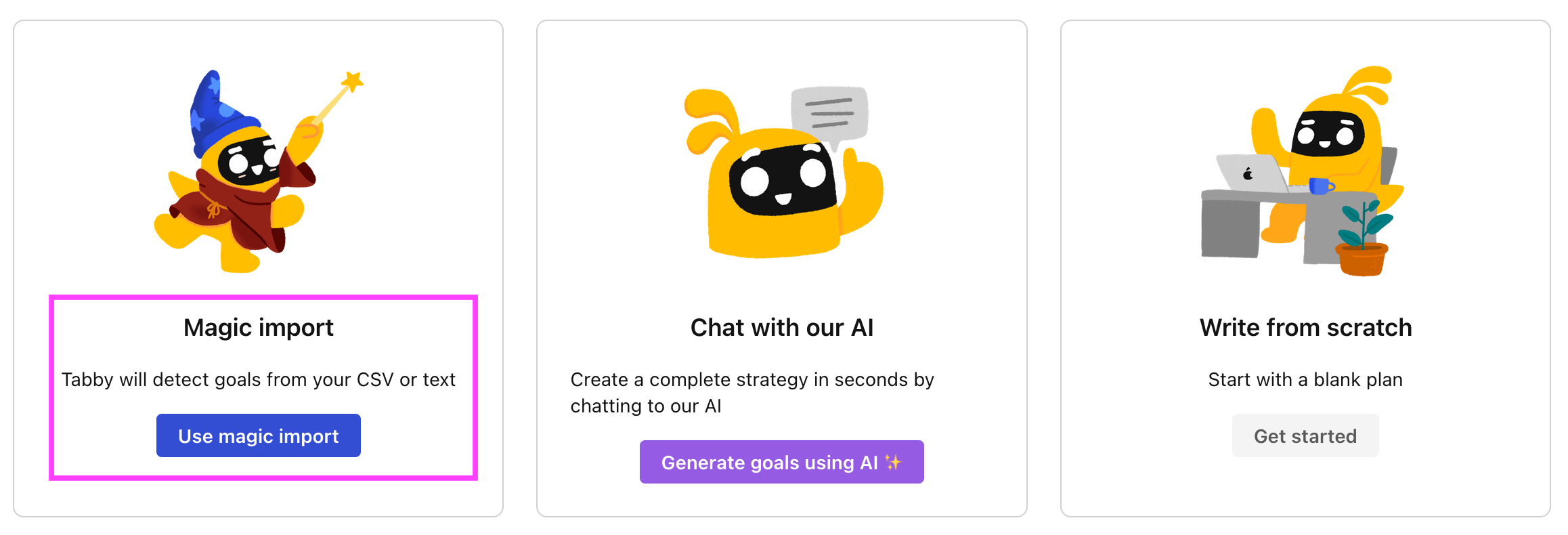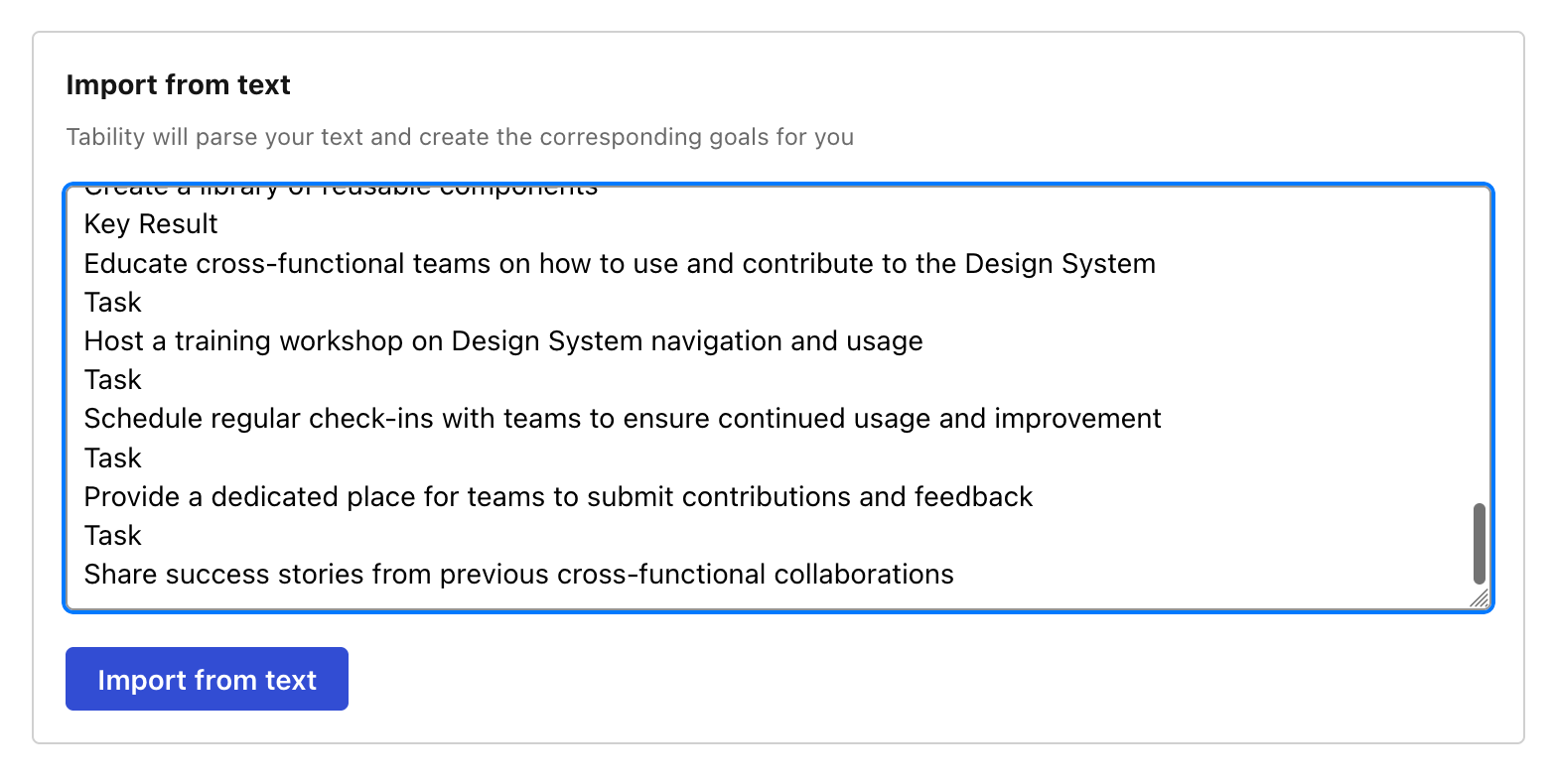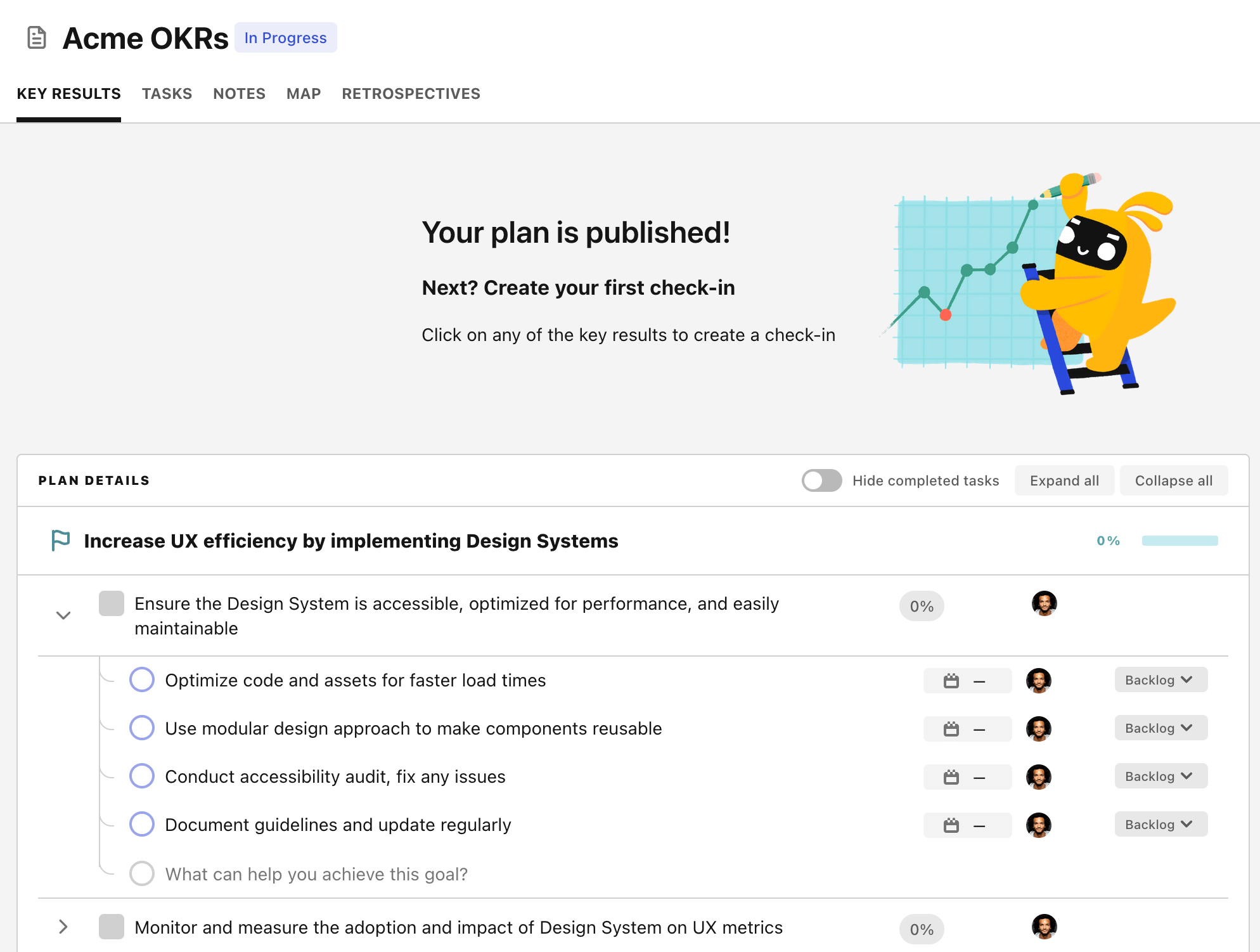OKR template to enhance CRM efficacy through implementation and tracking of OKR
Your OKR template
The second objective is to increase CRM end-user adoption to 85%. Strategies to achieve this goal include the implementation of incentives for consistent use of CRM, personalized CRM training for all end users, and improving the CRM user interface for easy navigation.
The third objective is to improve data integrity and reduce error rates by 25%. This can be achieved through employing data cleansing tools to improve data accuracy, implementing robust data validation checks on all input fields, and enhancing staff training on data input procedures.
Overall, enhancing CRM efficacy aims to improve customer satisfaction, CRM user adoption, and data integrity. These three aspects are the core towards delivering an effective Customer Relationship Management strategy and can be achieved with vigilant implementation and regular tracking.
ObjectiveEnhance CRM efficacy through implementation and tracking of OKR
KRBoost customer satisfaction scores by 10%
Provide regular training for customer-facing staff
Implement a regular customer feedback survey
Enhance customer support with a 24/7 helpline
KRIncrease CRM end-user adoption to 85%
Implement incentives for consistent CRM usage
Initiate personalized CRM training for all end users
Improve CRM user interface for easy navigation
KRImprove data integrity and error rate by 25%
Utilize data cleansing tools to improve accuracy
Implement robust data validation checks on all input fields
Enhance staff training on data input procedures
How to edit and track OKRs with Tability
You'll probably want to edit the examples in this post, and Tability is the perfect tool for it.
Tability is an AI-powered platform that helps teams set better goals, monitor execution, and get help to achieve their objectives faster.
With Tability you can:
- Use AI to draft a complete set of OKRs in seconds
- Connect your OKRs and team goals to your project
- Automate reporting with integrations and built-in dashboard
Instead of having to copy the content of the OKR examples in a doc or spreadsheet, you can use Tability’s magic importer to start using any of the examples in this page.
The import process can be done in seconds, allowing you to edit OKRs directly in a platform that knows how to manage and track goals.
Step 1. Sign up for a free Tability account
Go tohttps://tability.app/signup and create your account (it's free!)
Step 2. Create a plan
Follow the steps after your onboarding to create your first plan, you should get to a page that looks like the picture below.

Step 3. Use the magic importer
Click on Use magic import to open up the Magic Import modal.
Now, go back to the OKR examples, and click on Copy on the example that you’d like to use.

Paste the content in the text import section. Don’t worry about the formatting, Tability’s AI will be able to parse it!

Now, just click on Import from text and let the magic happen.

Once your example is in the plan editor, you will be able to:
- Edit the objectives, key results, and tasks
- Click on the target 0 → 100% to set better target
- Use the tips and the AI to refine your goals
Step 4. Publish your plan
Once you’re done editing, you can publish your plan to switch to the goal-tracking mode.

From there you will have access to all the features that will help you and your team save hours with OKR reporting.
- 10+ built-in dashboards to visualise progress on your goals
- Weekly reminders, data connectors, and smart notifications
- 9 views to map OKRs to strategic projects
- Strategy map to align teams at scale